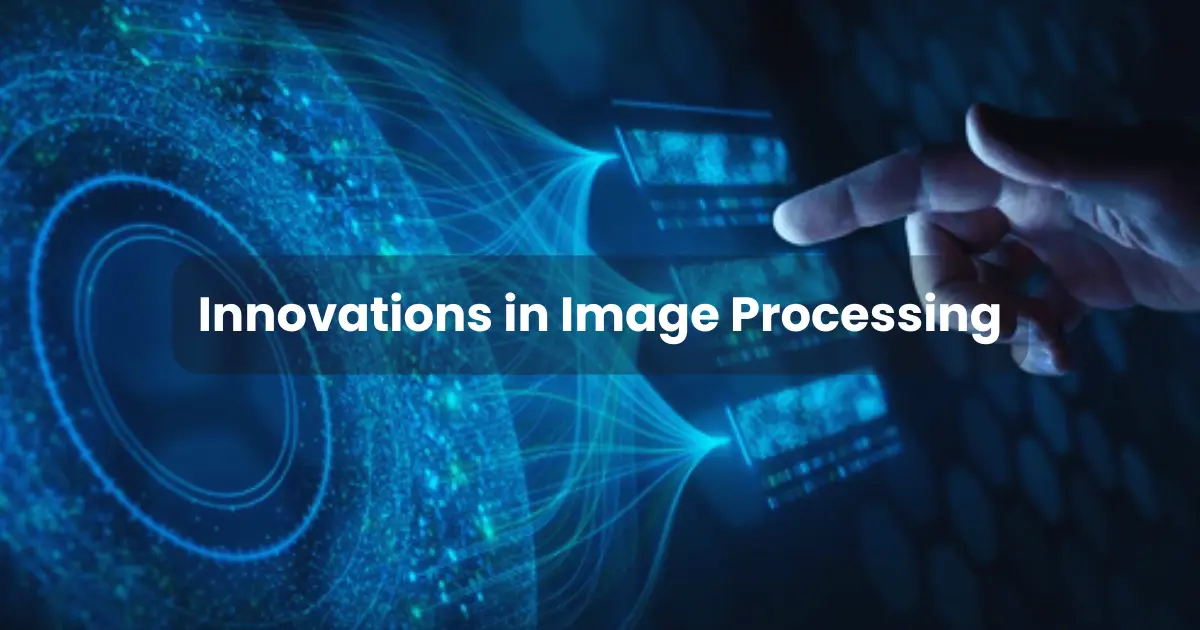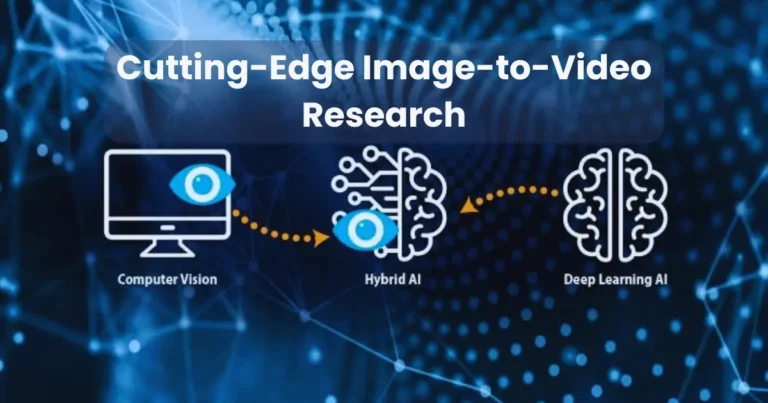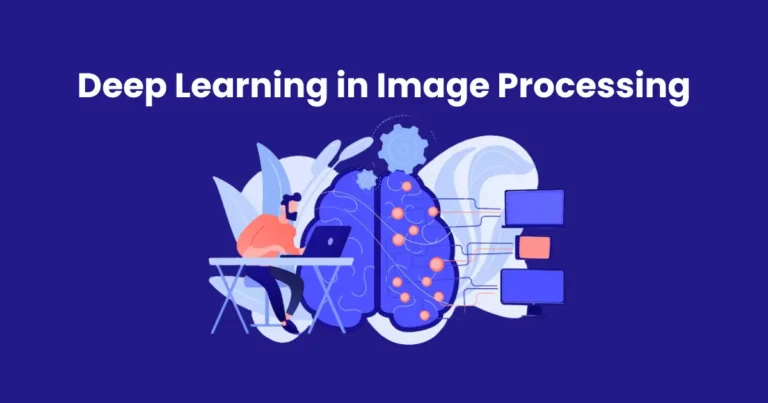Innovations in Image Processing: The Ultimate Guide

Contents
- 1 Artificial Intelligence in Image Processing
- 2 Deep Learning and Neural Networks
- 3 Edge Detection and Feature Extraction
- 4 Super-Resolution Imaging
- 5 Generative Adversarial Networks (GANs)
- 6 Real-Time Image Processing for AR and VR
- 7 Quantum Image Processing: The Future?
- 8 Ethical Considerations and Challenges in Image Processing
The field of image processing has experienced groundbreaking advancements, with innovations in image processing reshaping industries such as healthcare, security, and entertainment. As technology evolves, modern techniques enhance image clarity, improve real-time processing, and enable automation. From artificial intelligence (AI) to deep learning, these innovations boost accuracy, efficiency, and scalability. Moreover, the integration of machine learning and neural networks continues to redefine how images are captured, analyzed, and enhanced. As businesses and researchers explore new frontiers, innovations in image processing promise to unlock unprecedented possibilities in visual data analysis.
Artificial Intelligence in Image Processing
Artificial Intelligence (AI) has revolutionized image processing by introducing automation, accuracy, and efficiency in analyzing visual data. With AI-driven algorithms, tasks such as object recognition, image enhancement, and noise reduction have become faster and more precise.
1. AI-Powered Image Enhancement
AI-based models improve image quality by reducing noise, adjusting brightness, and enhancing resolution. Technologies like deep learning super-resolution (DSLR) upscale low-resolution images while preserving fine details, benefiting industries such as healthcare, surveillance, and entertainment.
2. Object Detection and Recognition
One of the most significant innovations in image processing is AI-driven object detection. Convolutional Neural Networks (CNNs) and Region-Based CNNs (R-CNNs) allow computers to identify and classify objects within an image. This technology is widely used in autonomous vehicles, facial recognition systems, and industrial automation.
3. Automated Image Segmentation
AI enhances image segmentation by dividing an image into meaningful regions. This is essential in medical imaging, where AI-powered segmentation helps detect diseases like tumors in MRI scans. Furthermore, it plays a crucial role in satellite imagery analysis and biometric authentication.
4. Real-Time Image Processing with AI
With advancements in edge computing and AI, real-time image processing has become more efficient. AI-powered systems in surveillance cameras, augmented reality (AR), and virtual reality (VR) applications process images instantaneously, improving security, gaming, and interactive experiences.
As AI continues to evolve, its role in image processing expands, leading to smarter, more adaptive, and highly efficient visual analysis systems.
Deep Learning and Neural Networks
Deep learning has significantly contributed to innovations in image processing, providing powerful methods for image classification, segmentation, and recognition. Neural networks, particularly Convolutional Neural Networks (CNNs) and Recurrent Neural Networks (RNNs), have transformed how images are analyzed, leading to improvements in various industries such as healthcare, security, and automation.

1. Convolutional Neural Networks (CNNs) in Image Processing
CNNs are widely used in image processing due to their ability to detect patterns, edges, and textures efficiently. These networks process images using layers of convolution, pooling, and activation functions, making them highly effective for:
- Facial recognition systems in security and social media applications
- Medical imaging analysis for detecting diseases like cancer or pneumonia
- Autonomous vehicles, where CNNs help in object detection and lane tracking
2. Image Segmentation with Deep Learning
Deep learning enhances image segmentation by breaking down an image into multiple regions for better analysis. Techniques like U-Net and Mask R-CNN help in:
- Medical diagnostics, allowing precise tumor detection in CT and MRI scans
- Satellite image analysis, assisting in land use classification and environmental monitoring
- Augmented reality (AR), improving real-world object interaction in gaming and navigation
3. Generative Adversarial Networks (GANs) for Image Synthesis
Generative Adversarial Networks (GANs) represent one of the most exciting innovations in image processing. They consist of two neural networks—a generator and a discriminator—that compete to produce realistic images. GANs are used for:
- Restoring old or damaged photos by generating missing details
- Creating synthetic training data for AI models when real data is limited
- Artistic style transfer, enabling AI-generated artwork and deepfake technology
4. Self-Supervised Learning for Image Processing
Traditional deep learning methods require labeled data, but self-supervised learning allows models to learn patterns from unlabeled images. This innovation reduces dependency on manual annotations and improves the scalability of image processing models.
With continuous advancements in deep learning, image processing is becoming more efficient, accurate, and capable of handling complex real-world challenges. These breakthroughs are paving the way for smarter AI-driven applications across multiple domains.
Edge Detection and Feature Extraction
Edge detection and feature extraction are crucial techniques in image processing, enabling systems to analyze, recognize, and classify images with greater accuracy. These methods help identify object boundaries, detect patterns, and extract meaningful information from images, making them essential in medical imaging, facial recognition, and autonomous systems.

1. Importance of Edge Detection in Image Processing
Edge detection plays a significant role in innovations in image processing by highlighting the boundaries between objects within an image. It enhances image clarity and simplifies further analysis. Some key applications include:
- Medical imaging – Detecting tumors, fractures, and organ structures in X-rays and MRIs
- Autonomous vehicles – Identifying lanes, obstacles, and traffic signs
- Security and surveillance – Enhancing facial and object recognition systems
2. Popular Edge Detection Techniques
Several algorithms are used for edge detection, each designed to identify transitions in pixel intensity. The most commonly used methods include:
- Sobel Operator – Detects edges by calculating gradients in an image, widely used for basic edge detection
- Canny Edge Detection – A multi-stage algorithm that improves noise reduction and edge precision, making it one of the most effective techniques
- Laplacian of Gaussian (LoG) – Enhances edge detection by first applying Gaussian smoothing to reduce noise
These techniques help extract meaningful structures from images, improving accuracy in image processing applications.
3. Feature Extraction for Image Analysis
Feature extraction involves identifying key patterns, textures, and shapes within an image. It helps reduce data complexity while preserving crucial information. Some common feature extraction techniques include:
- Histogram of Oriented Gradients (HOG) – Used in object detection, such as pedestrian recognition in self-driving cars
- Scale-Invariant Feature Transform (SIFT) – Detects key points in images, helping in image matching and recognition
- Speeded-Up Robust Features (SURF) – An improved version of SIFT, enabling faster object recognition in real-time applications
4. Real-World Applications of Edge Detection and Feature Extraction
The advancements in edge detection and feature extraction have led to practical implementations across various industries:
- Facial recognition – Used in security systems and biometric authentication
- Medical diagnostics – Enhancing accuracy in disease detection through pattern recognition
- Industrial automation – Assisting robots in identifying objects for assembly and quality control
By combining advanced edge detection and feature extraction techniques, innovations in image processing continue to improve accuracy, efficiency, and real-time decision-making across multiple sectors.
Super-Resolution Imaging
Super-resolution imaging is one of the most groundbreaking innovations in image processing, allowing low-resolution images to be enhanced into high-quality visuals. This technology improves clarity, detail, and accuracy, benefiting industries such as healthcare, security, and entertainment.

1. What is Super-Resolution Imaging?
Super-resolution imaging refers to techniques that enhance image resolution beyond the limitations of the original capture device. By reconstructing finer details, these methods improve image quality without requiring higher-resolution cameras.
There are two primary approaches:
- Single-image super-resolution (SISR) – Enhances a single low-resolution image
- Multi-frame super-resolution (MFSR) – Combines multiple low-resolution images to generate a high-resolution result
2. AI and Deep Learning in Super-Resolution
Artificial Intelligence (AI) and deep learning have driven innovations in image processing, particularly in super-resolution imaging. Machine learning models analyze patterns and predict missing details, resulting in sharper, clearer images.
Key AI-based techniques include:
- Generative Adversarial Networks (GANs) – Used to create realistic high-resolution images from low-quality inputs
- Convolutional Neural Networks (CNNs) – Improve super-resolution by learning complex image features
- Recurrent Neural Networks (RNNs) – Enhance video resolution by analyzing temporal sequences
These deep learning approaches allow applications like medical imaging, satellite image enhancement, and high-quality video streaming to benefit from super-resolution.
3. Applications of Super-Resolution Imaging
Super-resolution imaging is widely applied across multiple domains, including:
- Medical Imaging – Enhances MRI, CT scans, and X-rays, improving disease detection and diagnosis
- Surveillance and Security – Sharpens blurry security footage for better facial and object recognition
- Satellite and Remote Sensing – Improves image resolution for environmental monitoring and mapping
- Entertainment and Gaming – Enhances video game graphics and upscales low-resolution footage for 4K displays
4. Challenges and Future Prospects
Despite its advancements, super-resolution imaging faces challenges such as computational complexity, processing time, and potential artifacts in AI-generated images. However, continuous research in image processing is refining these techniques, making them more efficient and widely accessible.
As technology evolves, super-resolution imaging is expected to redefine visual experiences, setting new standards in clarity and detail across various industries.
Generative Adversarial Networks (GANs)
Generative Adversarial Networks (GANs) have emerged as one of the most transformative innovations in image processing, enabling machines to generate, enhance, and modify images with remarkable realism. These AI-driven models are revolutionizing fields such as computer vision, entertainment, and healthcare.

1. How GANs Work in Image Processing
GANs consist of two neural networks—the generator and the discriminator—which compete against each other in a process known as adversarial training:
- Generator – Creates realistic images from random noise
- Discriminator – Evaluates generated images and distinguishes between real and fake ones
Through repeated iterations, the generator improves its outputs until they become nearly indistinguishable from real images.
2. Applications of GANs in Image Processing
GANs have introduced groundbreaking capabilities in image processing, including:
- Image Super-Resolution – GANs upscale low-resolution images, enhancing details for medical imaging, security footage, and satellite images.
- Data Augmentation – In cases where real image datasets are limited, GANs generate synthetic images for AI model training.
- Style Transfer and Art Generation – GANs enable AI-driven artwork, transforming photos into paintings or mimicking famous artistic styles.
- Deepfake Technology – While controversial, deepfake GANs create hyper-realistic face swaps and voice synthesis, impacting media and entertainment.
- Medical Imaging Enhancement – GANs improve the clarity of medical scans, assisting in disease diagnosis and anomaly detection.
3. Advantages of GAN-Based Image Processing
- Generates high-quality, lifelike images
- Enhances image resolution with minimal noise
- Reduces reliance on large datasets by generating synthetic images
- Improves real-time image processing applications
4. Challenges and Ethical Considerations
Despite their potential, GANs face challenges such as computational intensity, data biases, and ethical concerns regarding misinformation and privacy. As innovations in image processing evolve, researchers focus on making GANs more transparent and responsible for real-world applications.
With continuous advancements, GANs will remain at the forefront of image processing, transforming industries and redefining visual creativity.
Real-Time Image Processing for AR and VR
Real-time image processing plays a vital role in Augmented Reality (AR) and Virtual Reality (VR), enabling seamless interactions and immersive experiences. These technologies rely on rapid image processing innovations to analyze, enhance, and overlay digital content onto the real world or virtual environments.

1. Importance of Real-Time Image Processing in AR and VR
AR and VR applications require ultra-fast image processing to ensure smooth performance and realistic visuals. Key benefits include:
- Low latency – Ensures real-time interaction and responsiveness
- Enhanced realism – Improves image clarity and detail for immersive experiences
- Object recognition and tracking – Enables real-world interaction with virtual elements
2. Key Technologies Behind Real-Time Image Processing in AR and VR
Several innovations in image processing power AR and VR experiences, including:
- Computer Vision – Analyzes and interprets real-world images to enable object detection and tracking
- Depth Sensing – Uses sensors like LiDAR and stereo cameras to measure distances and create 3D depth maps
- Feature Matching – Identifies and aligns points in images to ensure accurate overlay of digital elements
- AI-Powered Image Enhancement – Uses deep learning algorithms to sharpen images and reduce noise in real-time
3. Applications of Real-Time Image Processing in AR and VR
The impact of real-time image processing innovations is evident across various industries:
- Gaming and Entertainment – Enhances visual realism and responsiveness in AR/VR gaming
- Healthcare and Surgery – Enables AR-assisted surgeries with real-time image overlays
- Retail and E-Commerce – Powers virtual try-ons for clothing, makeup, and furniture placement
- Education and Training – Provides realistic simulations for skill development and remote learning
4. Challenges and Future Prospects
Real-time image processing for AR and VR faces challenges such as high computational demands, motion blur, and real-world environmental inconsistencies. However, ongoing advancements in AI, 5G, and hardware optimization are expected to overcome these hurdles, making AR and VR more accessible and efficient.
As technology progresses, real-time image processing will continue shaping the future of immersive experiences, revolutionizing how users interact with digital content.
Quantum Image Processing: The Future?
The Quantum computing is emerging as a game-changer in image processing innovations, introducing unprecedented computational power and efficiency. Quantum Image Processing (QIP) leverages the principles of quantum mechanics to enhance image analysis, pattern recognition, and real-time processing, potentially surpassing classical methods.
1. What is Quantum Image Processing (QIP)?
Quantum Image Processing (QIP) is a cutting-edge field that applies quantum computing techniques to process and analyze images more efficiently than classical algorithms. Unlike traditional image processing, which relies on binary pixels, QIP encodes images into quantum states, enabling complex calculations at an exponential speed.
2. How Quantum Computing Enhances Image Processing
Quantum computing introduces several advantages in image processing innovations, including:
- Parallel Processing – Quantum bits (qubits) allow multiple calculations simultaneously, speeding up image analysis.
- High-Dimensional Data Handling – Quantum systems efficiently process vast amounts of image data with minimal hardware requirements.
- Enhanced Pattern Recognition – Quantum machine learning improves facial recognition, object detection, and image classification.
- Superior Image Compression – QIP optimizes image storage and transmission without loss of quality.
3. Potential Applications of Quantum Image Processing
As quantum technology advances, its impact on image processing will transform multiple industries:
- Medical Imaging – Enables faster and more accurate MRI and CT scan analysis.
- Satellite and Space Exploration – Enhances high-resolution image processing for planetary mapping and astronomical observations.
- Security and Cryptography – Improves secure image encryption for cybersecurity applications.
- AI-Powered Image Recognition – Enhances deep learning models with quantum computing speed.
4. Challenges and Future Prospects
Despite its potential, QIP faces challenges such as hardware limitations, quantum noise, and algorithm development complexities. However, as quantum computing technology matures, its integration into image processing innovations will redefine the future of digital imaging, offering unparalleled efficiency and precision.
Quantum Image Processing represents the next frontier in image processing, holding the promise of revolutionizing visual data analysis across multiple domains.
Ethical Considerations and Challenges in Image Processing
While innovations in image processing have revolutionized industries, they also raise significant ethical concerns and technical challenges. As AI, deep learning, and quantum computing continue advancing, it is crucial to address issues related to privacy, bias, security, and responsible use.

1. Privacy and Data Security
One of the primary ethical concerns in image processing is the potential misuse of personal data. Advanced facial recognition and surveillance technologies, powered by AI and image processing innovations, can lead to:
- Unauthorized tracking and surveillance
- Breaches of personal privacy
- Data leaks due to insecure image storage
To mitigate these risks, organizations must implement stringent data protection laws, encryption techniques, and transparent policies regarding image collection and use.
2. Deepfakes and Misinformation
Generative Adversarial Networks (GANs) have made it possible to create hyper-realistic deepfake images and videos. While this technology has creative applications, it also poses risks, such as:
- Spreading fake news and misinformation
- Identity theft and fraud
- Manipulation of public perception
Regulating the use of AI-generated imagery and developing deepfake detection tools are essential to minimizing these risks.
3. Bias and Fairness in Image Processing Algorithms
AI-driven image processing innovations rely on large datasets, which can sometimes reflect biases present in society. This can lead to:
- Discriminatory facial recognition systems
- Inaccurate identification of people from underrepresented groups
- Ethical concerns in hiring, policing, and other AI-driven decision-making processes
Ensuring diverse and unbiased training datasets, along with transparent AI development practices, is crucial for fair and equitable image processing solutions.
4. Ethical Use of Surveillance and AR/VR Technologies
With real-time image processing driving advancements in augmented reality (AR) and virtual reality (VR), ethical concerns arise in areas such as:
- Consent in AR-based facial recognition
- Virtual deepfake impersonation
- Manipulation of visual reality in political or social contexts
Striking a balance between innovation and ethical responsibility is necessary to prevent misuse while fostering technological progress.
5. Environmental and Computational Challenges
Many advanced image processing innovations require extensive computational resources, leading to high energy consumption and environmental impact. Quantum and AI-driven image processing models need optimization to:
- Reduce carbon footprints
- Enhance computational efficiency
- Minimize electronic waste from outdated hardware
While innovations in image processing continue to shape the future, addressing ethical concerns and technical challenges is crucial for responsible development. By enforcing regulations, improving data security, and ensuring fairness in AI-driven applications, the industry can create ethical and sustainable image processing solutions.
Conclusion
The field of image processing innovations has undergone remarkable advancements, revolutionizing industries such as healthcare, entertainment, security, and artificial intelligence. From deep learning and neural networks to real-time AR/VR applications and quantum computing, these technologies continue to redefine how images are analyzed, enhanced, and utilized.
As AI-driven solutions become more sophisticated, challenges such as privacy concerns, algorithmic bias, and ethical misuse must be addressed. Responsible development, stringent data protection, and transparency in AI training are essential to ensure fairness and security in image processing applications.
Looking ahead, quantum image processing holds immense potential, promising unprecedented computational power and efficiency. With continuous research and technological refinement, image processing innovations will lead to even more precise, efficient, and immersive digital experiences. By balancing innovation with ethical responsibility, the future of image processing will be both groundbreaking and sustainable.






